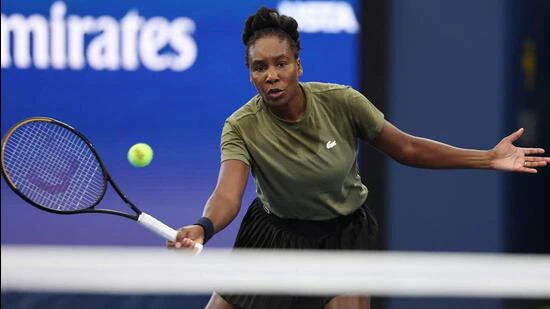Early US Open headlines will naturally focus on an American – but the spotlight may not fall on the men. Venus Williams, with a singles wild card and first-round meeting against 11th-seeded Karolina Muchova should corner a fair share, with a good chance it will be played on a show court.
This head-turning notice of a 45-year-old female athlete that itself should have ongoing global discussions around women’s sport take pause. To acknowledge where everything that led us to this day first began: with women’s tennis and the Women’s Tennis Association (WTA). The latest WTA avatar launched in February is titled ‘Rally The World’. It means a new website, social media packaging, TV graphics, all due bells and whistles. But it’s the words – Rally The World – that remind us how women’s tennis first created, marketed and succeeded with female sport as business entity and pop-culture cornerstone.
Starting more than 50 years ago when women’s sport itself was considered an anomaly to today, where seven of the world’s 10 highest-paid women athletes are tennis players. The most-watched tennis match on ESPN, Sarah Swanson, WTA’s Chief Brand Officer, reminds me, is not a men’s match but Serena Williams vs Ajla Tomljanovic third round, 2022 US Open. The WTA slogan was chosen to, Swanson says, “own that positioning as the leader in women’s sports”.
Swanson joined WTA Ventures (WTA’s commercial arm) in December 2023, when everyone was talking about women’s sports and “the rest of the business (around women’s sport) is catching up to where the WTA is… We have a leadership position because we have been doing this longer and more successfully.” With its first mover, shaker and history-maker advantage WTA can “push the boundaries on sponsorship, on media deals that can set a benchmark for the rest of women’s sport… we take that responsibility seriously and know we can lead.”
In India, separating governance and marketing of men’s and women’s sport in Olympic disciplines is hardly considered. In Swanson’s industry – professional sport – a distinct female identity is the starting point. Men’s and women’s leagues make for entirely “separate businesses… from a business perspective, from a brand perspective.”
As an independent entity WTA, she says, “bring our players, our tournaments, our brand to life through the way we want to tell stories… I have the luxury of just talking about the women because that’s my brand.” Swanson previously worked with NFL-UK and World Surf League (as chief marketing officer) in a career spanning over 20 years. Marketing across sport is fundamentally “marketing winning and losing and telling athletes stories” but the women, she says, always have other stories to tell. “We have to think about our bodies differently, we are treated differently around our bodies.”
In March, WTA launched its Maternity Fund Program with the Saudi Public Investment Fund (PIF). It meant more than 300 players got paid maternity leave for 12 months, grants for fertility treatments and IVF and improved opportunities to return to the tour. “That’s not a conversation you’re ever having on the men’s side.” Swanson said, “We don’t talk about fatherhood the way you talk about motherhood in coming back to the sport after having a child.”
WTA’s performance health division works around women’s health issues which include “everything from the proper fitting up of a sports bra to pelvic health to maternity…” It is where WTA exchanges the most information and research outcomes with other sports. Along with mental health, the latest spectre is online bullying, WTA’s “Threat Matrix” built to block it. The programme works through players’ social profiles “to identify that bullying and try to weed some of that out to protect our athletes.”
WTA’s engaging with PIF and staging its year-end finals in Riyadh was strongly criticised by tennis greats Martina Navratilova and Chris Evert for falling in with sportswashing. Swanson though says the decision “sits squarely” with WTA’s core brand values of “creating opportunities and breaking boundaries”.
“This wasn’t going to be going and playing tennis for a week… it was about community development and community work.” A three-year deal with the Saudi Tennis Federation (STF) has WTA running coaching and mentoring programmes, supporting STF’s drive to engage a million people in tennis by 2030. After Coco Gauff won the Riyadh WTA Finals, she said she had reservations about playing in Saudi but added, “I do think sport can have a way to open doors… In order to want to change, you have to see it. And sport is the easiest way to introduce that. She talked of “knowing from the past”, citing her grandmother’s experience of integrating into an all-white Florida school. “People aren’t going to like it, but in the long run it could be better for everybody.”
Over fifty years of amplifying its sport and athletes, WTA has ensured women’s tennis stays integrated in the debate and change around world sport, be it new markets, equal pay, mental health, globalisation. Swanson believes it even “transcends” women’s sport. “We are not just part of the women’s sports conversation. We’re part of an entertainment conversation, a cultural conversation, a broader sports conversation.”
As women’s sport becomes central to business, policy and public discussions, the “breadth and history” of WTA/women’s tennis with the expanding range, physicality and commercial value of its athletes has turned “pushing the boundaries” into a living, growing reality.
